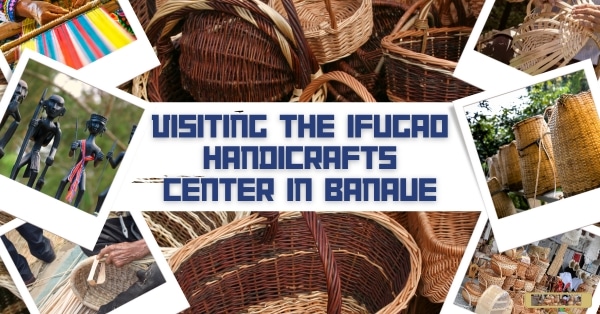Iloilo is home to some of the most beautiful and well-preserved colonial architecture in the Philippines. From churches, public buildings, residential structures, and other must-see structures, Iloilo’s colonial architecture reflects its rich history spanning from Spanish colonization to Japanese occupation to post-war reconstruction.
In this guide, we will explore the history of Iloilo’s colonial architecture, the key features of its buildings, and the best sites to explore. We will also provide tips on how to make the most out of your tour. Whether you’re a history buff or simply an admirer of beautiful structures, this guide is sure to give you a thorough understanding of Iloilo’s colonial architecture and a memorable experience. Let’s begin!
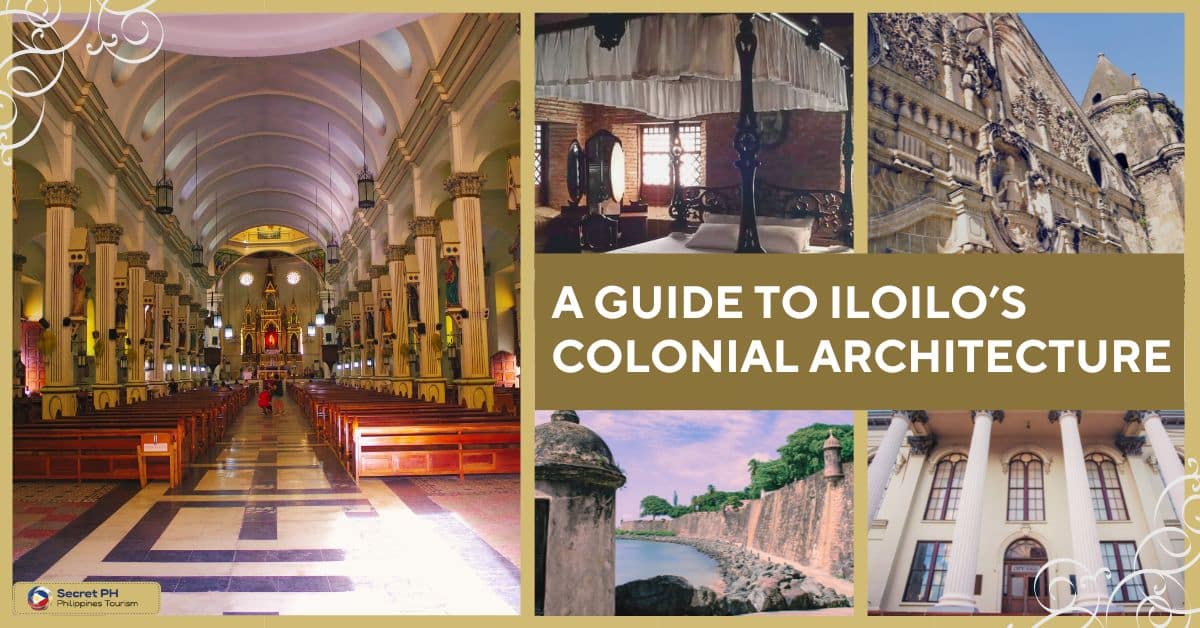
Colonial Architecture of Iloilo
Iloilo’s colonial architecture is a unique blend of Spanish, Chinese, and Filipino influences. The most prominent example of Iloilo’s colonial architecture is the churches built during the Spanish era, which remain largely intact to this day. These churches often feature baroque-style designs with alternating bands of red brick and white stucco walls and are decorated with colorful stained glass windows, statues, and paintings.
Aside from churches, Iloilo is also home to other noteworthy structures from the colonial era such as Fort San Pedro, Casa Real de Iloilo (the former provincial government office), Molo Church, and more. These structures are prime examples of Iloilo’s architectural heritage and provide a glimpse into the city’s past.
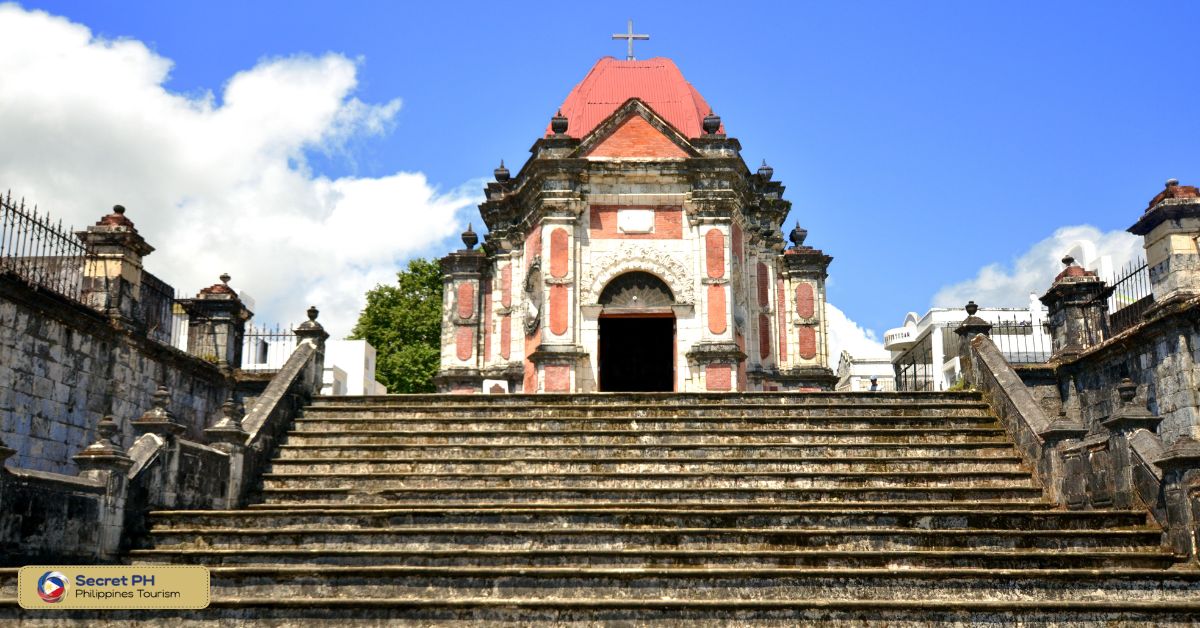
Key Features to Look Out For
When touring Iloilo’s colonial architecture, there are some key features that you should look out for:
- Red brick and stucco walls: These alternating bands of red brick and white stucco walls are a common feature of the city’s colonial architecture.
- Colorful stained glass windows: Many of Iloilo’s churches have colorful stained glass windows that depict religious scenes or serve as memorials to important figures in local history.
- Statues and other adornments: Look out for bronze statues, paintings, and other adornments that give a unique touch to the city’s colonial architecture.
- Arches: Look for the numerous arches used in Iloilo’s colonial buildings, which are designed to provide structural support as well as aesthetic beauty.
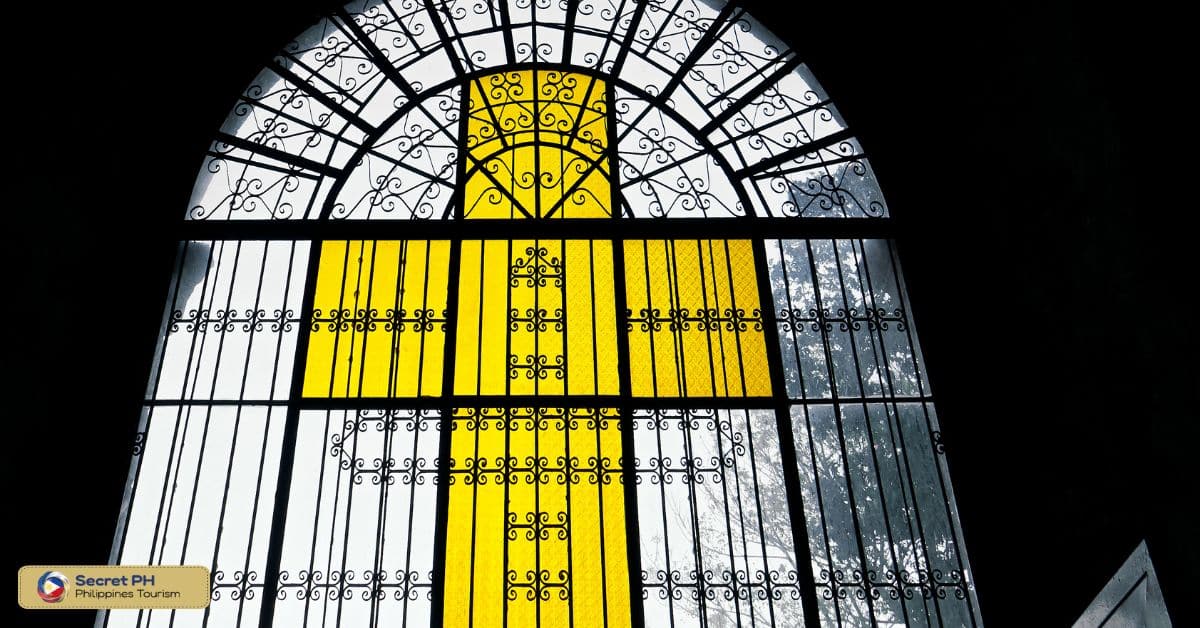
History of Iloilo’s Colonial Architecture
Iloilo, a province in the Western Visayas region of the Philippines, has a rich history of colonial architecture that dates back to the Spanish colonial period. From churches and religious structures to public buildings and residential structures.
During the Spanish colonial period, which lasted from the 16th century until the end of the 19th century, Iloilo was an important center of trade and commerce. The Spanish colonizers built numerous churches and religious structures throughout the province, which were often designed in the Baroque style.
In 1898, the Philippines came under American control, and the American colonial period began. During this time, new public buildings were constructed in Iloilo, including the Iloilo City Hall and the Provincial Capitol, both of which were designed in the Neo-Classical style.
The Japanese occupation of the Philippines during World War II had a significant impact on the architecture of Iloilo. Many of the buildings constructed during this time were designed for practical purposes rather than aesthetics and were often built using locally available materials such as bamboo and nipa.
After the war, the Philippines underwent a period of reconstruction and modernization. New buildings were constructed using modern building techniques and materials. Today, Iloilo’s colonial architecture serves as a reminder of the province’s rich history and cultural heritage.
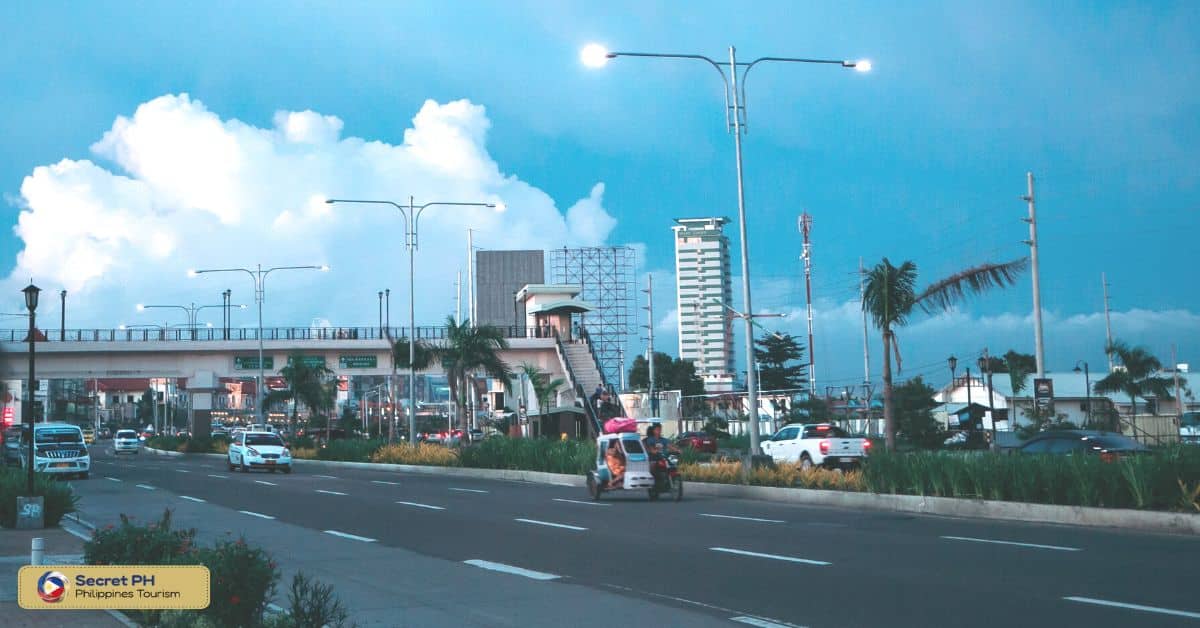
Churches and Religious Structures
Churches and religious structures are some of the most visible examples of colonial architecture in Iloilo. From grand cathedrals to small parish churches, these buildings reflect the long history of Catholicism in the province and provide a glimpse into its cultural heritage. Here are some of the most prominent churches and religious structures in Iloilo:
1. Jaro Cathedral
Jaro Cathedral is a stunning example of how colonial architecture impacted religious structures in the Philippines. Commissioned by Bishop Mariano Cuartero, it was constructed in the 1880s and is home to both a Catholic bishop and an archbishop.
This church stands as an emblem of both faith and culture, standing three stories tall while emulating Neo-Gothic features. Its interior showcases detailed stained glass windows, an impressive altar adorned with gold symbols, and several shrines, and antiques that commemorate Filipino heritage.
Address: PHF4+9CH, Jaro, Iloilo City, 5000 Iloilo
Phone: (033)3291625
For pictures, booking, and more information, click here.
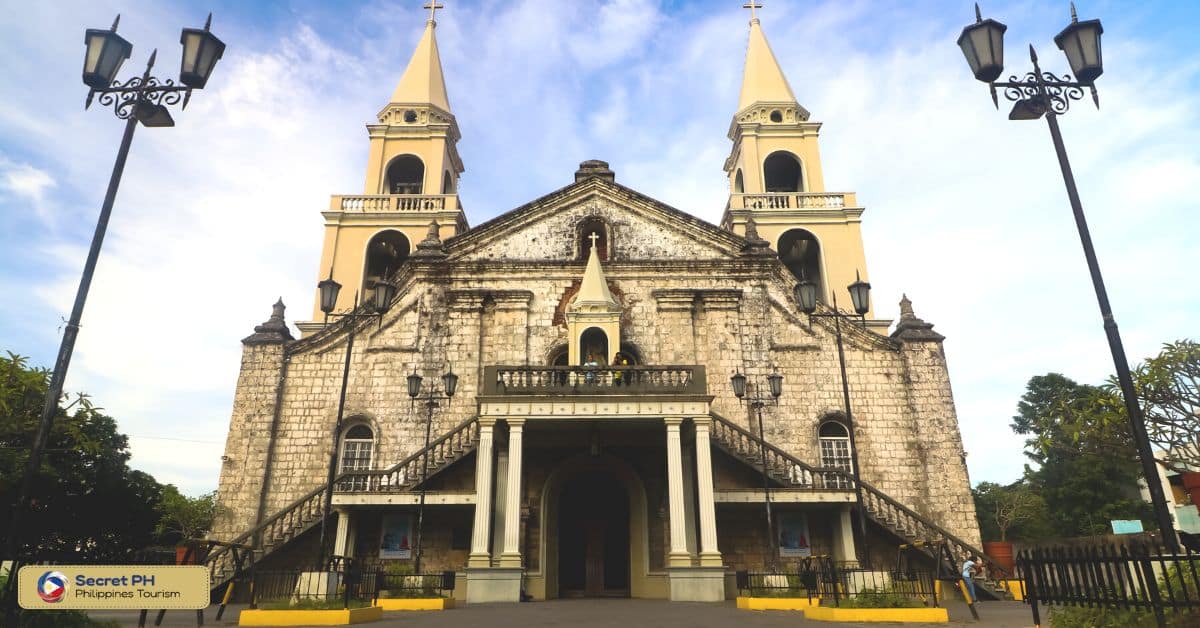
2. Miagao Church
The Miagao Church, built in 1786, is a remarkable example of colonial architecture. Its structure consists of an adobe brick, lime, and sandstone façade and a barrel-vault ceiling that makes use of Hispanic-Philippine techniques. It stands proudly today as a reminder of an era long past.
Despite its age, the church remains well preserved due to the resilient materials that were used to construct it, with many of its intricate details still intact. All in all, Miagao Church offers a vivid picture of an architecture that developed during the Spanish colonial period that speaks volumes about this important piece of Philippine history.
Address: J6RP+P54, Zulueta Ave, Miagao, 5023 Iloilo
Phone: +639178984461
For pictures, booking, and more information, click here.
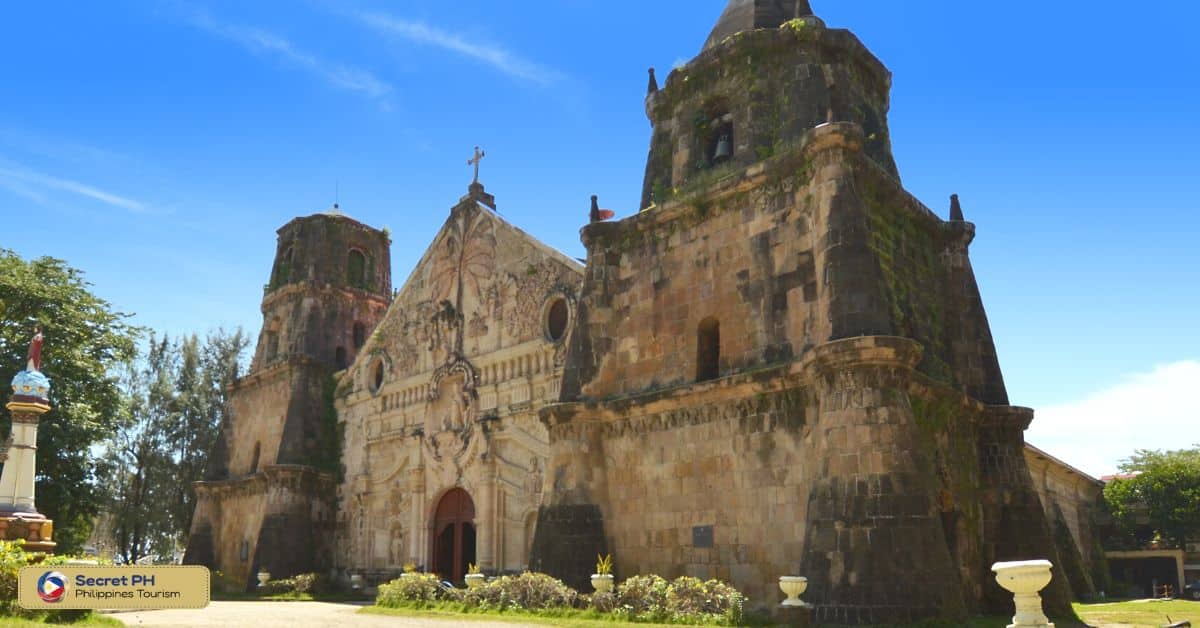
3. Molo Church
Molo Church is a remarkable example of colonial architecture, built in the year 1925 by French settlers as a symbol of power and influence. Its impressive stone façade demonstrates an unparalleled level of grandeur and sophistication, which isn’t at all surprising considering the unique purpose it served.
While it may appear quite plain from the outside, within lies an architectural marvel that houses some intricately designed features. Ancient inscriptions carved on the walls, high vaulted ceilings, and marble flooring work in tandem to create a truly captivating atmosphere. Visiting Molo Church is sure to provide an extraordinary experience that stays with you for years to come.
Address: 132 San Pedro St, Molo, Iloilo City, 5000 Iloilo
Phone: (033)3372258
For pictures, booking, and more information, click here.
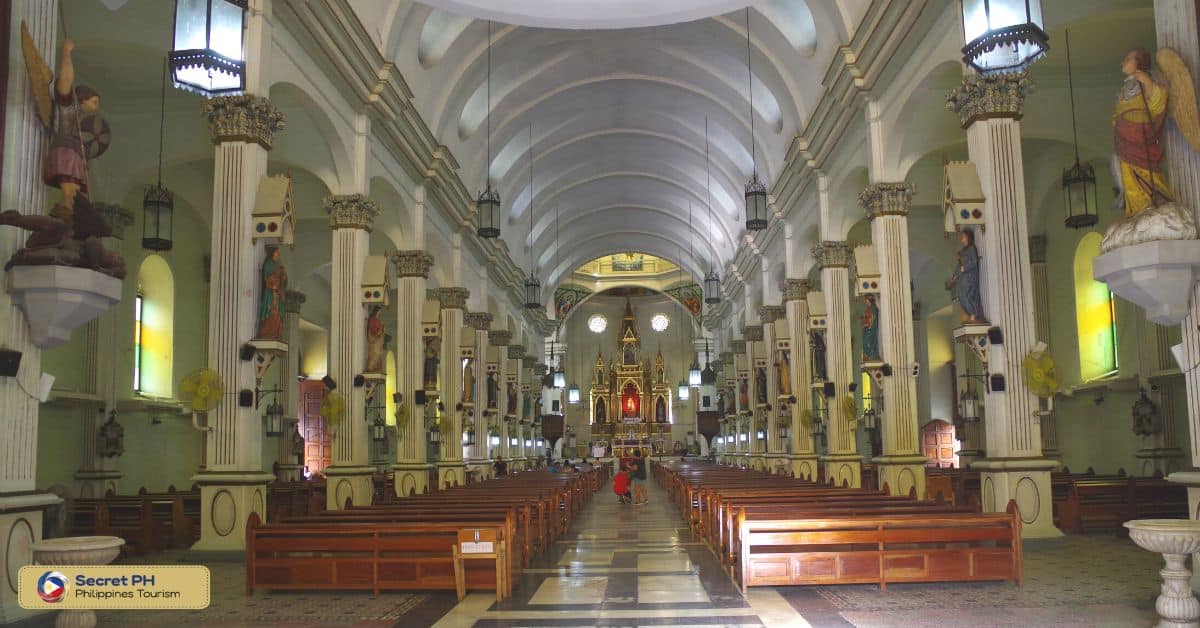
Public Buildings
Iloilo is also home to several public buildings from the colonial era, most of which were designed in the neoclassical style. These buildings are often characterized by their grand sizes and striking features, such as arched windows, large columns, and ornate decorations. Some of the most notable public buildings in Iloilo include:
1. Iloilo City Hall
Built in the 1920s, Iloilo City Hall is one of the most iconic public buildings in Iloilo. Its neoclassical design features two grand arches at the entrance, large columns and pilasters along its facade, and ornate decorations that add to its grandeur.
This building is a reminder of the city’s vibrant past and how it was able to combine Spanish, Chinese, and Filipino influences in its colonial architecture. The Iloilo City Hall is definitely a must-see for those looking to explore the city’s unique architecture and culture.
Address: De la Rama St, Iloilo City Proper, Iloilo City, 5000 Iloilo
Phone: (033)3331111
For pictures, booking, and more information, click here.
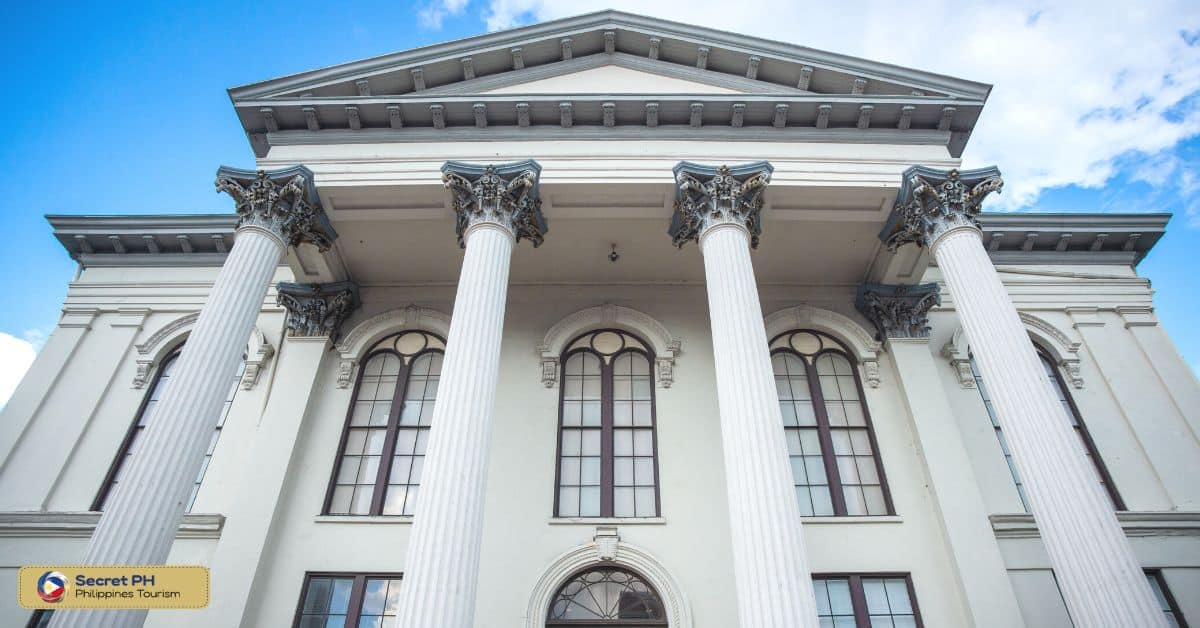
2. Casa Real de Iloilo (Old Capitol)
Another impressive colonial building in Iloilo is the Casa Real de Iloilo, which was constructed in 1844. It was originally used as the provincial government office, and today it serves as an important historical site that houses several artifacts from the colonial period.
This building is characterized by its elegant neoclassical design, which features two grand arches at the entrance and large columns that line both sides of the facade. The Casa Real de Iloilo is sure to captivate visitors with its grandeur and fascinating history.
Address: PH29+MMC, General Luna St, Iloilo City Proper, Iloilo City, Iloilo
Phone: (033)5095093
For pictures, booking, and more information, click here.
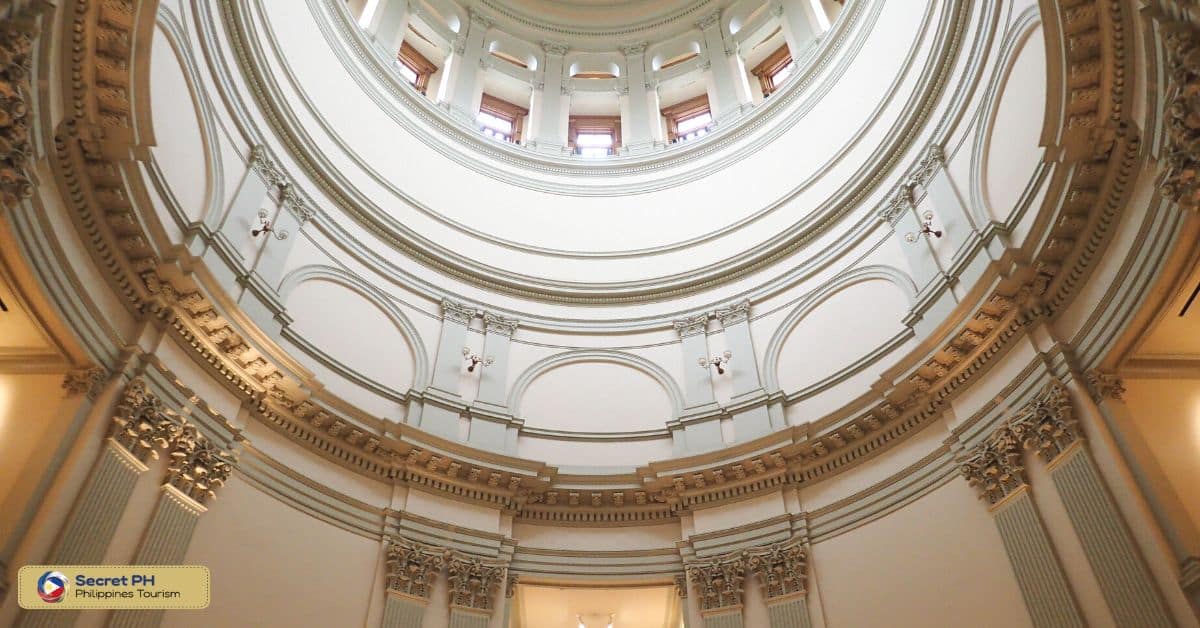
3. Old Iloilo Provincial Jail
The Old Iloilo Provincial Jail, also known as the Fort San Pedro Barracks, is another important example of colonial architecture in Iloilo. Built-in 1878, this building was used as a prison for criminals during the Spanish colonial period.
Today, it stands as a reminder of the city’s turbulent past, and its imposing stone façade serves as a stark contrast to more modern structures in the area. The Old Iloilo Provincial Jail is an interesting example of how traditional and modern architecture coexists in Iloilo.
Address: PH39+8F5, Muelle Loney St, Iloilo City Proper, Iloilo City, Iloilo
Phone: (033)3273782
For pictures, booking, and more information, click here.
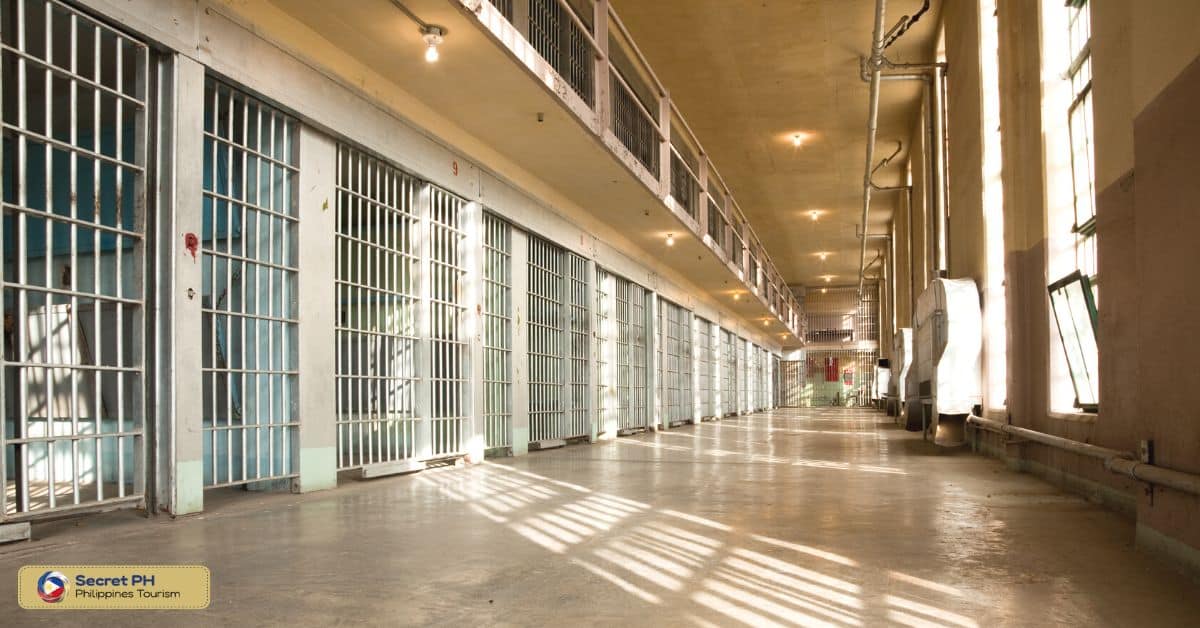
Residential Structures
Aside from churches and public buildings, Iloilo is also home to several charming residential structures that reflect its colonial heritage. These structures are characterized by their ornate design, which incorporates elements from both Spanish and Chinese architecture. Some of the most interesting residential structures in Iloilo include:
1. Casa Mariquit
Casa Mariquit is an impressive example of colonial architecture, built in the early 20th century. This two-story house features a unique blend of Spanish and Chinese influences, including ornate wooden carvings on its facade, tile roofs, and red brick walls.
One of its most impressive features is the expansive garden in the back, which was designed by renowned landscape architect J. Antonio Araneta in the 1930s and is filled with lush foliage and vibrant flowers. Visiting Casa Mariquit is sure to provide an unforgettable experience.
Address: 20 Santa Isabel St, Jaro, Iloilo City, Iloilo
For pictures, booking, and more information, click here.
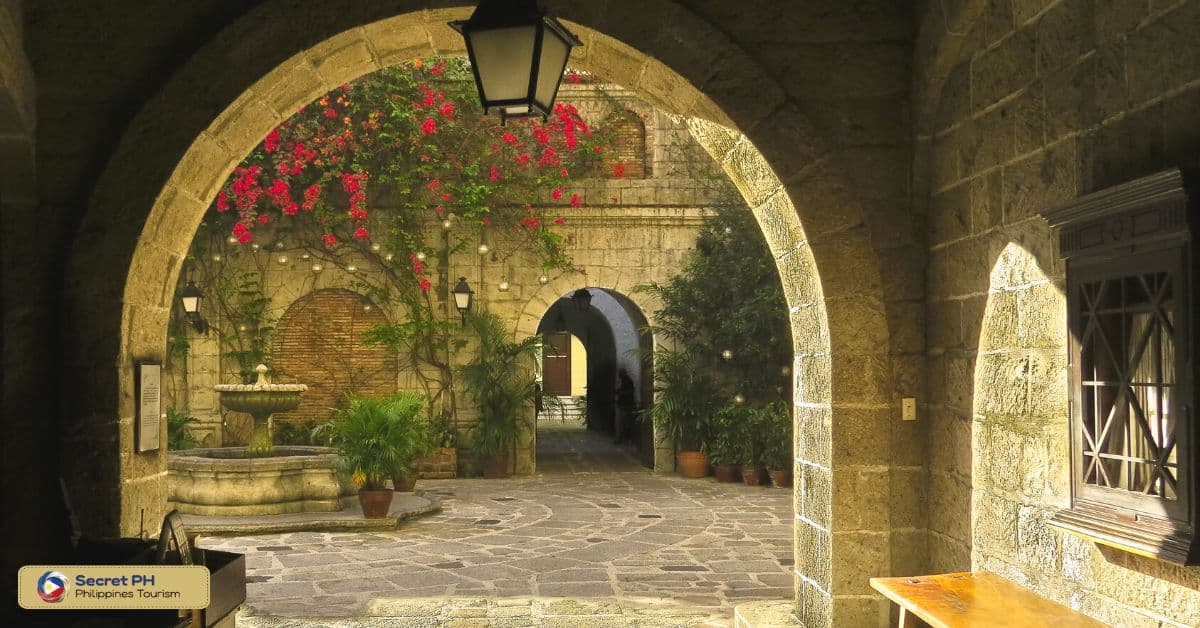
2. Camiña Balay Nga Bato
Built in 1823, Camiña Balay Nga Bato is an antique house that stands as a testament to Iloilo’s colonial heritage. Its impressive stone façade is admired with intricate carvings and features red brick walls that are covered in vines and other vegetation from the surrounding environment.
Inside, the house is a time capsule of old-world Filipino life, with period furniture and artifacts carefully preserved in their original condition. Visitors to Camiña Balay Nga Bato can view photos, paintings, and other artifacts on display in the house’s museum. The house also has a library, which houses a collection of books and documents related to Iloilo’s colonial period.
Address: 20 Osmeña Street brgy Sta. Felomina arevalo, Iloilo City, Philippines
Phone: +639478911467
For pictures, booking, and more information, click here.
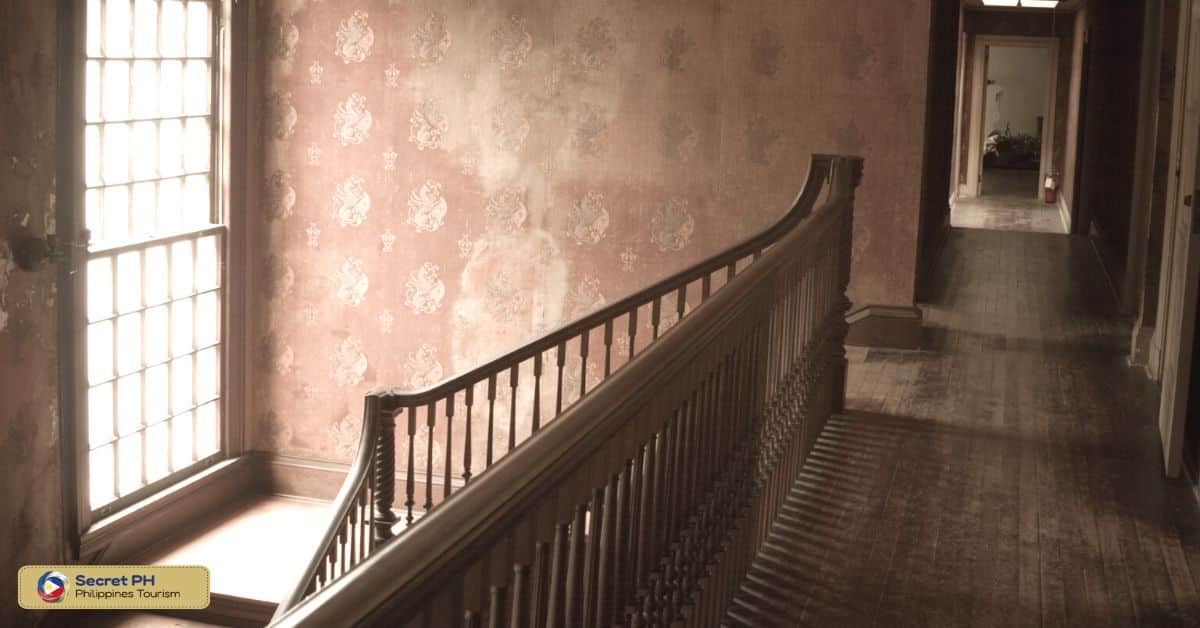
3. Nelly Garden
Nelly Garden is decorated with a variety of colorful flowers and plants. It has a charming fountain, comfortable benches, and a wide pathway to stroll around the garden.
Nelly Garden is a popular tourist destination in Iloilo, offering visitors an opportunity to appreciate the city’s colonial architecture and vibrant culture. It is also home to a collection of ancient artifacts, such as clay pots and stone tools, which provide an interesting glimpse into the past.
Address: Brgy E Lopez St, Jaro, Iloilo City, Iloilo
Phone: +639498182923
For pictures, booking, and more information, click here.
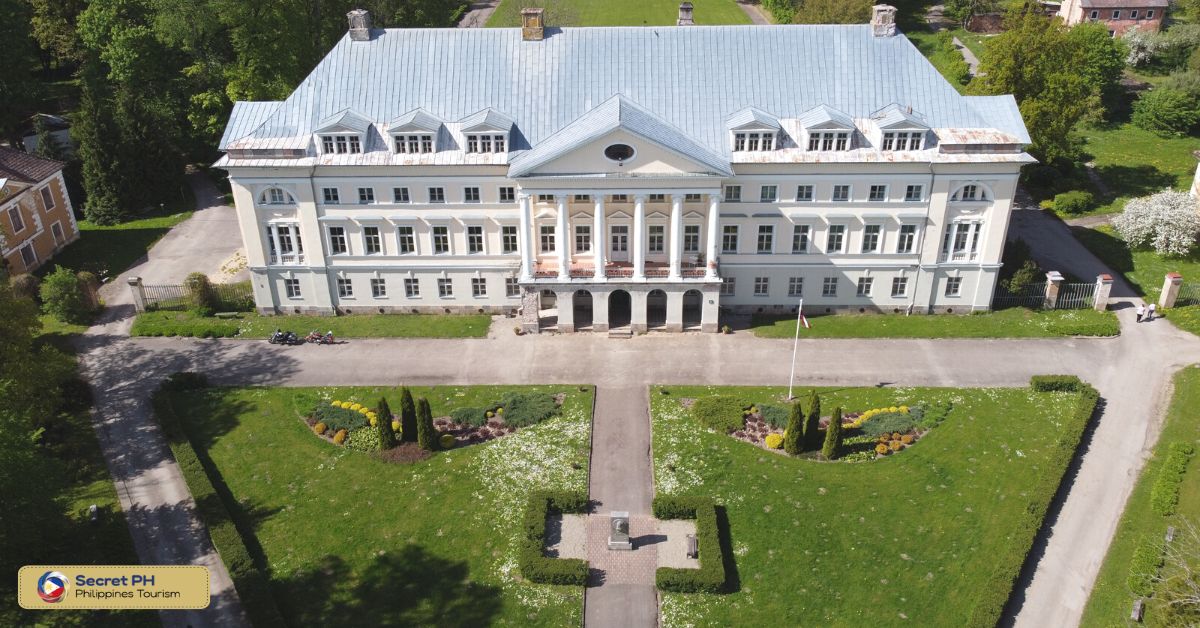
Other Must-See Structures
In addition to the aforementioned colonial architecture, there are several other must-see structures in Iloilo that provide a unique glimpse into the province’s culture and history. Here are some of the most interesting structures you should check out:
1. Calle Real de Iloilo
Iloilo City’s Calle Real de Iloilo is a popular destination for history buffs and colonial architecture lovers alike. It features some of the finest Spanish colonial architecture in Southeast Asia, with over 20 buildings retaining their original features to this day.
As one of the few cities in the Philippines that escaped destruction during World War II, Calle Real de Iloilo provides an unparalleled glimpse into what life would have been like here during the Spanish occupation between 1574 – 1898. Visiting Calle Real de Iloilo is an immersive experience that truly allows you to travel back in time and connect with the city’s past.
Address: JM Basa St, Iloilo City Proper, Iloilo City, 5000 Iloilo
If you want to visit this place, check the directions here.
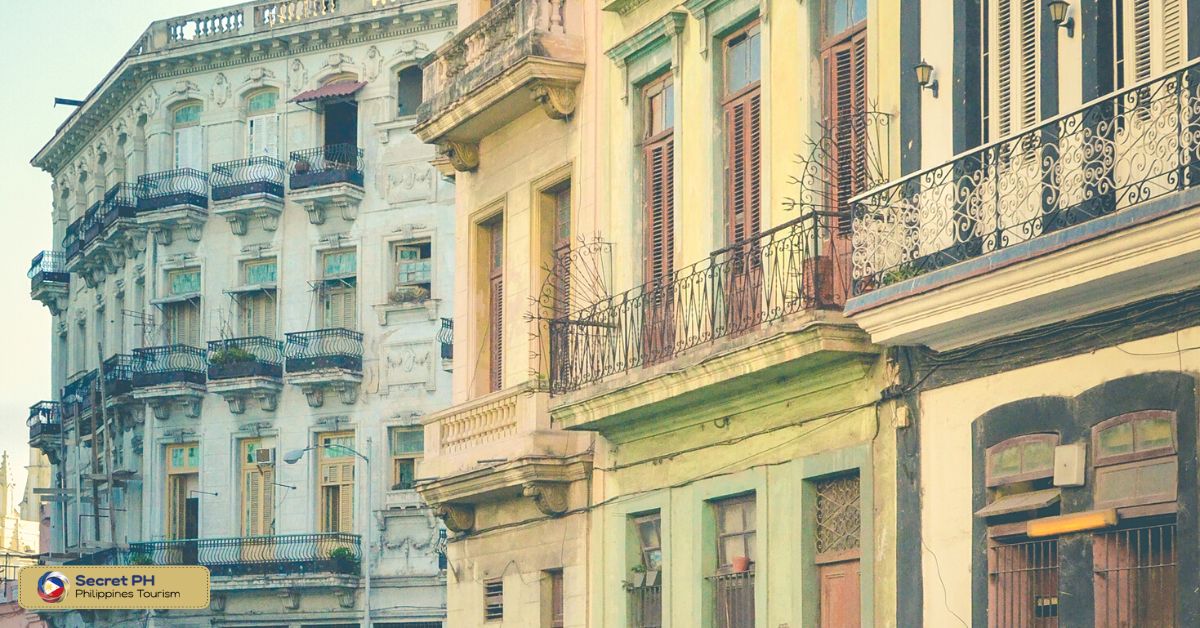
2. Plaza Libertad
Plaza Libertad in Iloilo is a Spanish colonial-style public square that has served as the heart of the city since 1888. Built to commemorate the 264-year reign of the King of Spain and their liberation from colonial rule, this majestic plaza offers a unique insight into Iloilo’s rich cultural heritage.
Plaza Libertad also features a beautiful bronze monument of Jose Rizal, one of the country’s most revered patriots, which adds to its historic grandeur. With its captivating history and breathtaking views, it’s no wonder why visitors from all over come to experience Plaza Libertad and its delightful reminders of days past.
Address: Plaza Libertad Zamora St, Iloilo City Proper, Iloilo City, 5000 Iloilo
Phone: (033)775888
For pictures, booking, and more information, click here.
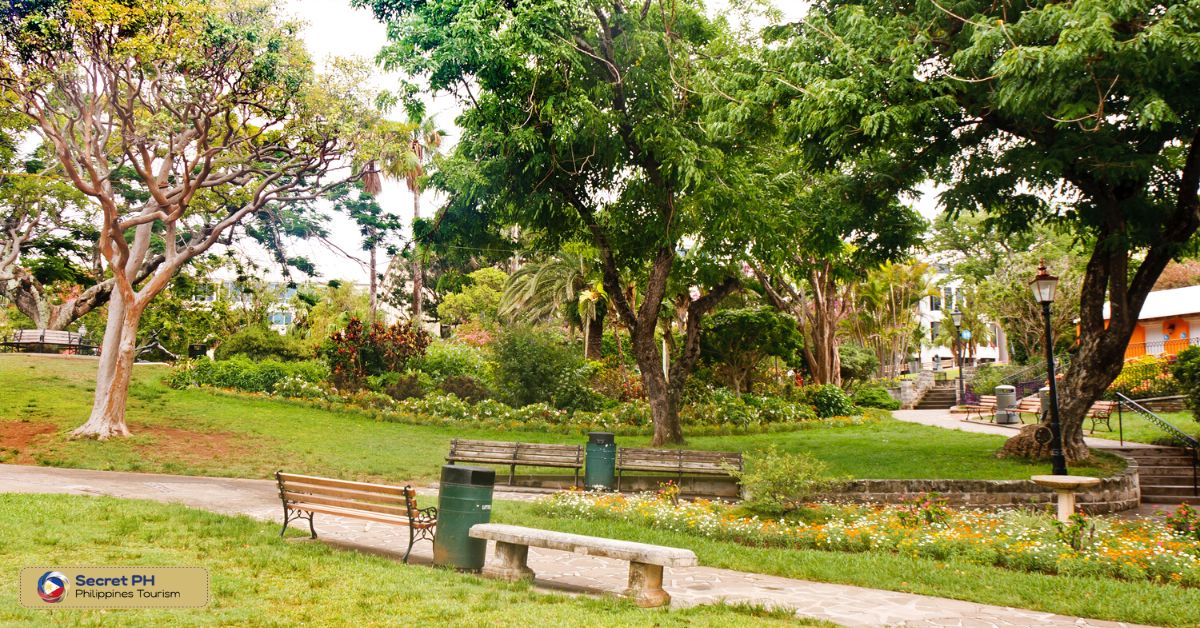
3. Fort San Pedro
Fort San Pedro in Iloilo, which dates back to the 17th century, is a living testament to Spanish colonial architecture. Located on the edge of Port Iloilo City, it was built by the Spanish as a citadel to defend against invaders and protect their ships docking at the port.
Made of hard-baked clay bricks and coral stones cut directly from its own moat, the fort has three bastions with small lighthouses used as watchtowers during raids. Its other two entrances feature massive gates that were over two meters thick, rendering them virtually impenetrable. After surviving centuries of wear and tear, the fort is now an iconic symbol of Philippine history.
Address: MHQH+6VW, Fort San Pedro Dr, Iloilo City Proper, Iloilo City, Iloilo
If you want to visit this place, check the directions here.
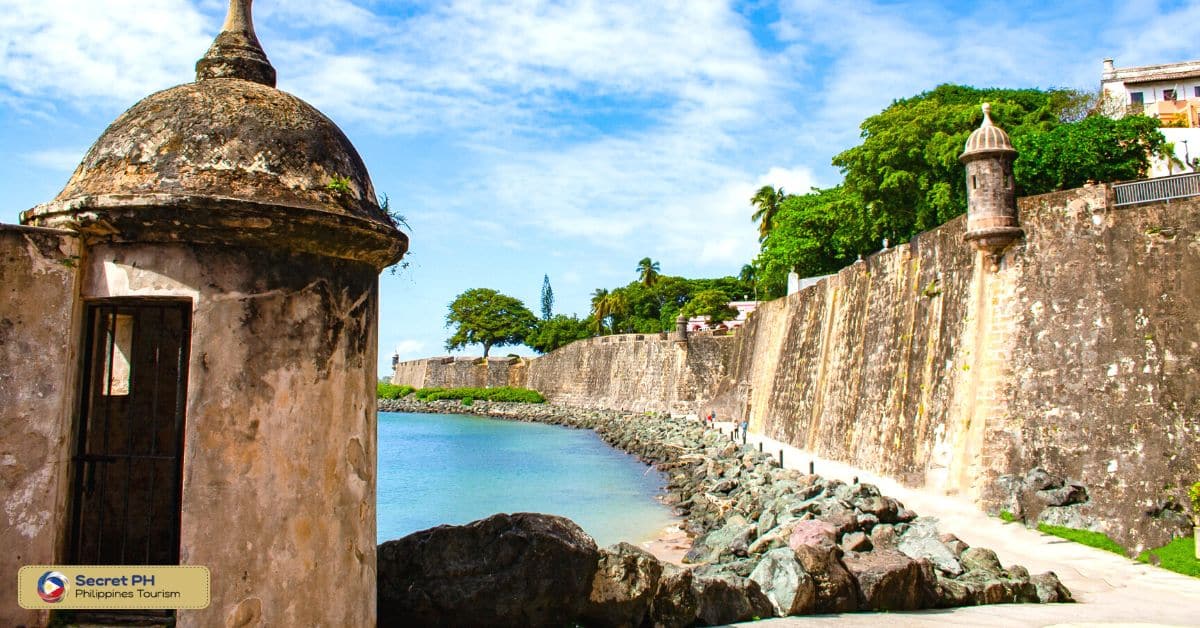
4. Molo Mansion
Molo Mansion is a remarkable edifice and an iconic reminder of the city’s colonial past. Constructed in the early 20th century, it stands as one of the few existing examples of colonial architecture from the period in the Philippines. Built to reflect the wealth and power of its owner, this luxurious structure incorporates elements from distinct residential styles adapted to serve Filipino needs and climate.
In its grand design, imposing columns, wooden balustrades, and vivid colors paint a unique aesthetic without sacrificing functionality. The mansion is a marvel of old-world craftsmanship timelessly testifying to Iloilo’s rich heritage.
Address: Yusay-Consing Mansion, Locsin St, Molo, Iloilo City, Iloilo
Phone: +639287194139
For pictures, booking, and more information, click here.
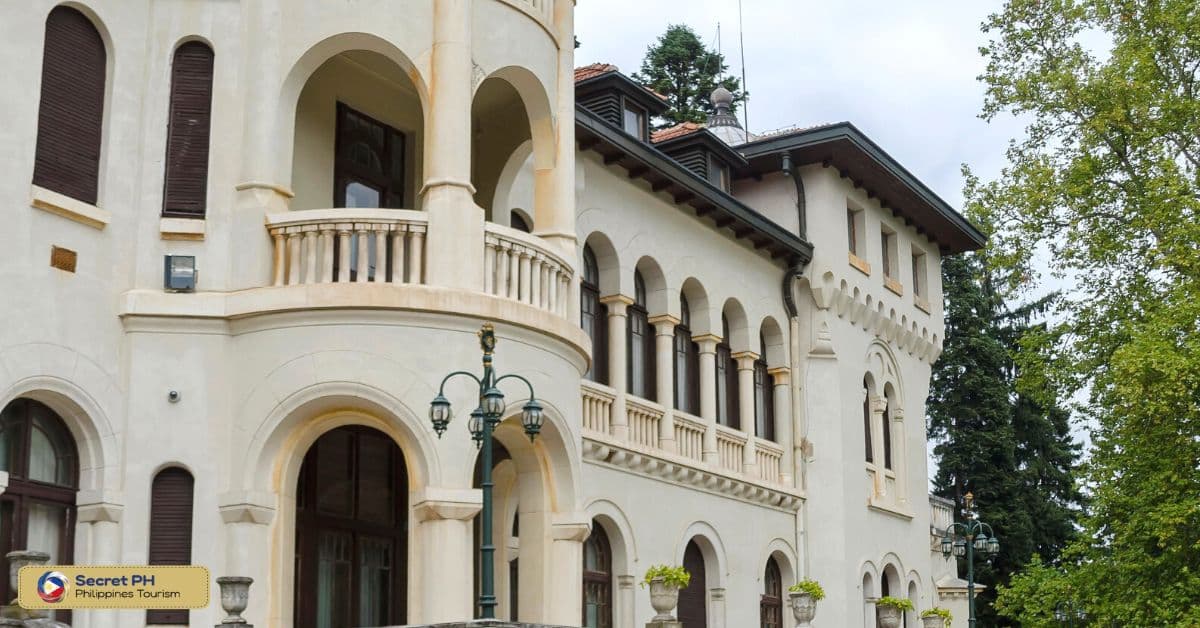
5. Iloilo River Esplanade
Iloilo River Esplanade is an important cultural destination in the region of Iloilo, Philippines. It spans almost 1.5 kilometers along the banks of the Iloilo River and draws its distinctiveness from colonial-style architecture that stands as a symbol of a rich colonial history passed through generations.
Many buildings here reflect much from the era including a national historical landmark known as the Calle Real or Jaro Belfry which is now home to several art galleries, churches, theaters, and other landmarks that still remain today despite centuries of development. Be sure not to miss out on witnessing such a unique heritage when you are in this area!
Address: Senator Efrain Treñas Blvd., Mandurriao, Iloilo City, Iloilo
If you want to visit this place, check the directions here.
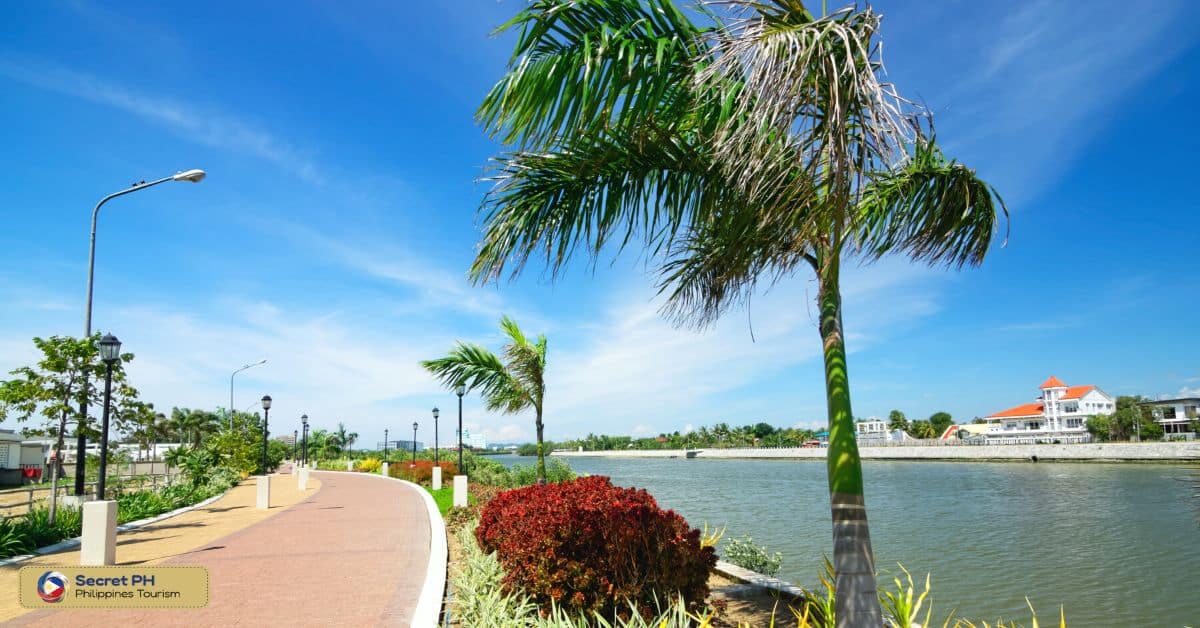
The Impact of Colonial Architecture on Iloilo’s Culture and Identity
The impressive colonial architecture in Iloilo has played a significant role in shaping the city’s culture and identity. From churches to public buildings and residential structures, these structures have served as reminders of the city’s past and its unique cultural heritage.
By preserving traditional architectural styles, Iloilo is able to retain a link to its history, even in the face of modern development. Furthermore, preserving these structures and making them accessible to visitors allows people to gain a deeper appreciation and understanding of the city’s history and culture, which is essential for its continued growth.
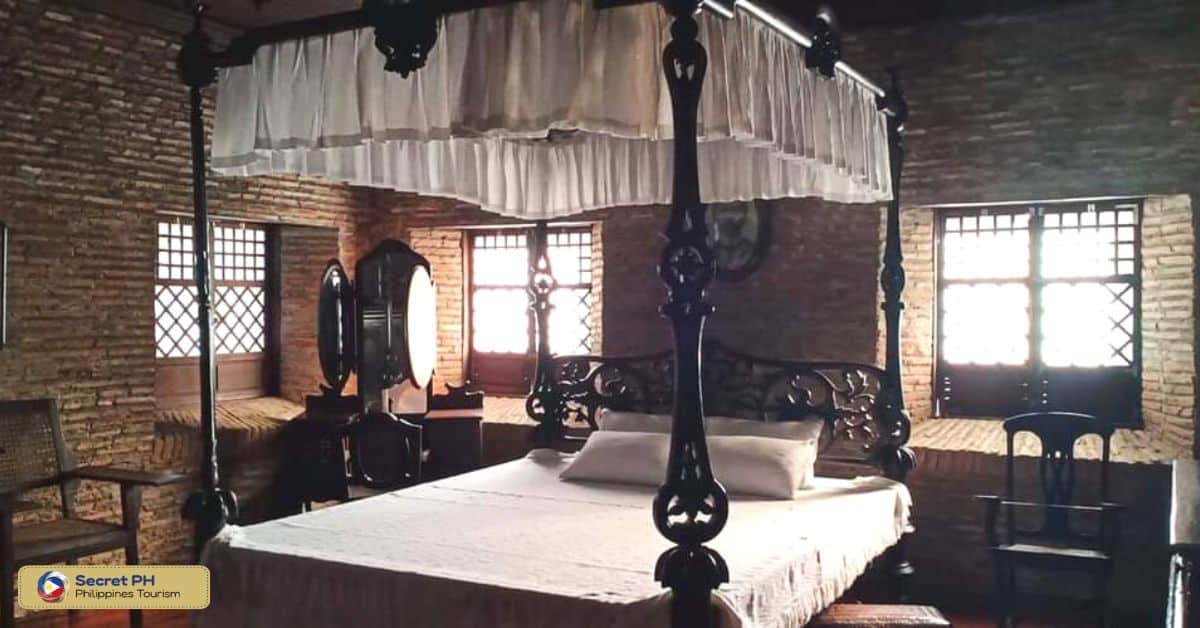
Tips for Exploring Iloilo’s Colonial Architecture
Exploring Iloilo’s Colonial Architecture is a great way to immerse yourself in the city’s rich history and culture. Whether you’re looking to learn more about the city’s past, appreciate its stunning architecture, or simply enjoy a unique experience, there are plenty of great options for you to explore. Here are some tips for making the most out of your visit:

1. Do your research: Before visiting any of the sites, it’s important to do some research so you can have a better understanding of their history and significance.
2. Wear comfortable shoes: Exploring Iloilo’s colonial architecture requires a lot of walking, so make sure to wear comfortable shoes.
3. Bring a camera: Be sure to bring a camera so you can capture the beauty of Iloilo’s colonial architecture for posterity.
4. Respect the heritage: Make sure to respect the heritage of Iloilo’s colonial architecture by not disturbing or vandalizing any of the sites.
5. Ask locals for advice: Asking locals for recommendations is the best way to find hidden gems and explore Iloilo’s colonial architecture with a local touch.
Exploring Iloilo’s colonial architecture is an enriching experience that will leave you with a deeper appreciation of the city’s history and culture. Take your time and enjoy the beauty of Iloilo’s colonial legacy!
In Conclusion
Iloilo’s colonial architecture is a fascinating reflection of the city’s rich past and cultural identity. With its captivating history and stunning architecture, it is no wonder why Iloilo has become a popular destination for those looking to explore the Philippines’ colonial heritage.
Whether you’re interested in learning about the city’s past or simply appreciate beautiful structures, Iloilo is sure to provide a memorable experience that you won’t soon forget. So don’t wait any longer, plan your trip to Iloilo and explore its colonial architecture today!








